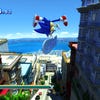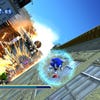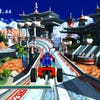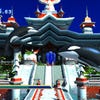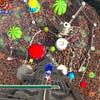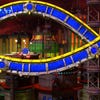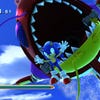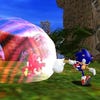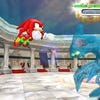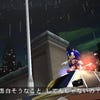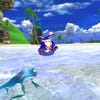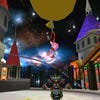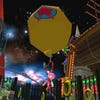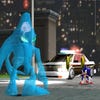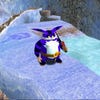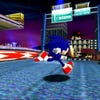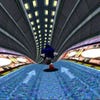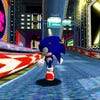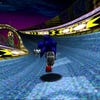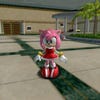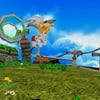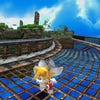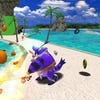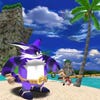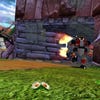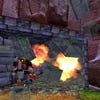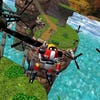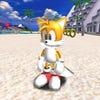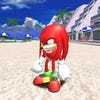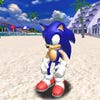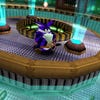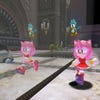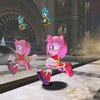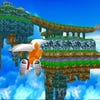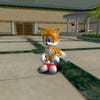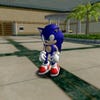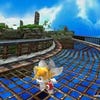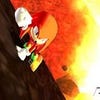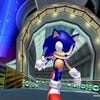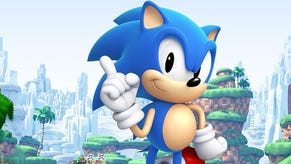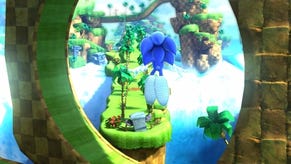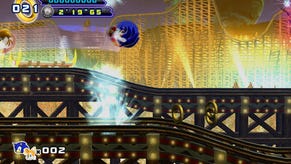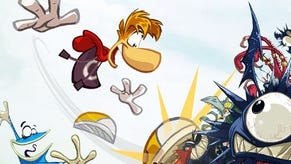Feature: Generation Sonic
Sonic Team reflects on twenty years of speed.
It's Sonic's 20th birthday, and Sega has given him the best gift possible to celebrate. Sonic Generations will be, for many, the best turn that the hedgehog's put in for years, blending the 3D acrobatics of Sonic Colours and the more retrograde 2D thrills of Sonic 4 - and indeed the three other numbered Sonic games that preceded it.
Something to be proud of, then, and fittingly a game that does justice to Sonic's proud heritage. Here, Sonic Team stalwart Takashi Iizuka - a man who's been working on Sega's mascot for over 17 of its 20 years - takes us through Sonic's genesis, his growing pains and his future.
At first, in the Mega Drive era, we really wanted to sell the hardware. Sega wanted to create an action figure that really showed what the hardware could do. We did an internal competition to get all the developers to come up with characters and proposals.
At the time Yuji Naka and Naoto Oshima were actually working on a game that was separate from all this, but it fed into it. It wasn't a hedgehog at first, and we made him blue after the corporate colours.
At the very, very beginning he was a human, and the concept was to have him move around this smooth environment rather than this blocky level design, and the idea was to have him keep moving at that high speed, and keep the one-button gameplay. It's quite hard to do that with a human, but with a hedgehog he can roll up into a ball and jump, and that's his attack. It allows for really simple input.
"At the very, very beginning [Sonic] was a human."
At first what we were shooting for was to create an action game where the level was smooth, and that's where it started. In the beginning we didn't think it would be possible to have these big loops and such high speed, but the person who was doing the programming - Naka-san - when you compare it to other games of that era, with his programming optimization he got it running at this high speed. It was the 16-bit hardware that allowed all this, but it's Naka-san's programming that really made it.
We were obviously conscious of what we're doing, but the starting point wasn't to beat Mario - it was to create the best action game. Whereas Mario's all about more careful platforming, Sonic's about that sense of speed, and where we're coming from is different. Obviously the marketing guys were trying to compare the two.
In the first title in the Sonic franchise, although at the time the competition in action games was really high, we were able to provide a really unique experience for people. And after that first game we were able to do Sonic 2 & 3 in a relatively short space of time - combine that with quality and innovation and we were able to establish a brand image, and also the image of his character in people's minds very early on.
After Sonic 3 & Knuckles, the same team that had been making all the Sonic games moved away and started doing the Nights games. At the same time, the recognition of the franchise went down, and one of the key points in keeping it going is keep releasing games as regularly as possible. Since we realized that we've been constantly releasing Sonic games.
"The starting point wasn't to beat Mario - it was to create the best action game."
From the first Sonic up to Heroes, it was one team - and more or less the same people creating the titles. And these titles we created, we learned from the mistakes of the previous games, and that's how we did things; each game would be bigger and better than the last.
After that, the Sonic franchise became too big for one relatively small team, so we started to delegate to other people, including external studios. We started to see different types of Sonic, because everyone's got their own vision of what Sonic should be. It became really hard to control the direction as well as the quality of the titles - and that's one thing I regret.
The most challenging moment was definitely Sonic Adventure. That was a moment when Sonic moved from 2D to 3D - and along with that change there were so many different things that we explored with that game.
Prior to Adventure Sonic had no voice, and there was no real story. But that was one game where we started story elements and voice acting - and that was also one of the pioneers in 3D action, and not only for Sonic. None of us in the industry really had the knowledge how to create 3D games for a home console. It was a hard challenge.
We'll continue doing both. I can't say too much, but of course we've already released Sonic the Hedgehog 4: Episode I, and we've started work on Episode 2. For the 3D games, we'll continue exploring that too.
Sonic's been around for a long time, and there have been lots of games - so I'm sure some of the creators for these games have played Sonic, and maybe they have been influenced by him.
Obviously smart phones have changed the gaming industry quite a lot - and while we've got no plans for Sonic on Vita as yet, we've already released Sonic on smart phones, and we'll keep doing that.



